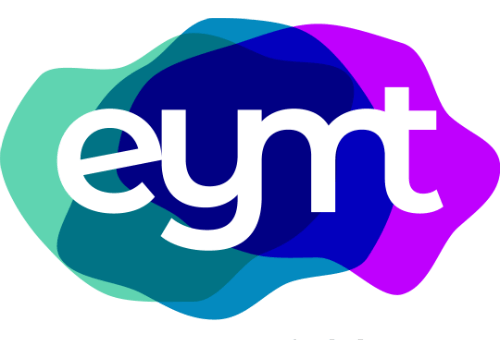Understanding emotional vulnerability is an important part of mental health. Emotional vulnerability is your sensitivity threshold to triggers. Essentially, an emotional reaction is based off how sensitive you are at that moment. Sometimes emotional vulnerability is unique to that moment, and other times it is always present. Learning and understanding your emotional vulnerabilities is the first step to better managing and regulating your emotions and behaviors. This is important to ensure that you are engaging in healthy and effective behaviors. This means acting in ways that lead to the best results overall in both the short term and long term.
WHAT CAUSES EMOTIONAL VULNERABILITY
Biology
Your genetics play into emotional vulnerability. Some people are biologically more sensitive to emotional stimuli. In such cases, you notice subtle emotional information that may not register with others. Additionally, biology can play into experiencing emotions more often, more intensely, and seemingly out of the blue.
Biology also impacts how likely you are to engage in a behavior. Some people are more biologically prone to acting impulsively. In any given situation, your internal experience will prompt an urge to do something. What those urges are and the intensity is related to genetics and biology.
Social environment
The environment you grow up in plays a huge part in emotional vulnerability. When that environment is invalidating, and the people around don’t seem to understand your emotions, it leads to an increased emotional vulnerability. When you get feedback that tells you your emotions are wrong, bad, or weird that also causes a higher emotional sensitivity.
Your current emotional environment will also impact emotional vulnerability. Your present circumstance might reinforce the idea that your emotions are bad or wrong. Or your environment may support highly emotional states and actions, leading to a constant state of stress and feeling overwhelmed.
The combination of biological and social factors from past and present define what your current emotional vulnerability level is. The problem is when that level is high, it causes one to feel out of control, stressed, and unable to manage the situation at hand. By knowing this, one can regain control of their actions and better manage their emotions by accounting for the vulnerabilities. You can do this with the help of a behavior chain analysis and a missing-links analysis.
Behavior change analysis to reduce emotional vulnerability
A behavior chain analysis is utilized when you engage in ineffective behaviors due to an inability to manage your emotions. A chain analysis consists of examining a chain of events that lead to the behavior(s). By doing this you can figure out how to repair any damage caused by the behavior (i.e. if you yell at someone out of anger and they stop talking to you) and learn how to keep from engaging in this behavior in the future. The chain analysis operates on similar concepts as the model of emotions which was discussed in a past blog.
Chain analysis step by step:
- Describe the problem behavior. Be very specific in what you did, said, thought, or felt. Examples of ineffective behaviors: emotional eating, overdrinking, yelling at someone, physical violence like throwing something or hitting someone, throwing a tantrum, etc.
- Describe the prompting event. Think about the environment you were in prior to the behavior and then describe what happened that led you to having the urge to engage in the behavior.
- Describe the factors that happened before the event to make you more emotionally vulnerable. Consider any physical illness, being tired or hungry, substance use, etc. Think if there was any previous stressful events or intense emotional experiences before the specific prompting event.
- Detail the chain of events that led to the behavior. Consider actions, body sensations, feelings, thought process (include beliefs, expectations, and assumptions), and events in the environment and things other people did.
- Describe the consequences. How did other people react after? How did you feel? Think about immediate reactions and those after some time has passed.
Then to change the behavior for the future
- List more effective behaviors you can use to replace the ineffective one(s). Look through your chain of events and determine how you could have acted differently and more effectively.
- Develop a prevention plan to reduce emotional vulnerability. Problem solve and cope ahead when you know you are more vulnerable. Think about what you can do to create more effective environments for yourself.
Understanding Emotional Vulnerability
Understanding emotional vulnerability is an important part of mental health. Emotional vulnerability is your sensitivity threshold to triggers. Essentially, an emotional reaction is based off how sensitive you are at that moment. Sometimes emotional vulnerability is unique to that moment, and other times it is always present. Learning and understanding your emotional vulnerabilities is the first step to better managing and regulating your emotions and behaviors. This is important to ensure that you are engaging in healthy and effective behaviors. This means acting in ways that lead to the best results overall in both the short term and long term.
Missing Links analysis to reduce emotional vulnerability
Sometimes people don’t do what they need or wanted to do or they act in ways that they later regret. A missing links analysis helps you identify what got in the way of acting effectively. It also helps you to problem solve for the future.
Missing links step by step

When using either analysis in order to problem solve and come up with more effective behaviors, it takes learning new skills. That is one of the many benefits of DBT because you learn very concrete skills that you can use to replace unhealthy dysfunctional habits. The bottom line is that behavior change and understanding emotional vulnerability does not stop at the chain analysis. You need to take it one step further and learn more skillful behaviors. This can be done through things like online research, books related to mental health, and therapy. Make the time to learn skills to help better function in the world and live a more satisfied life.

Alyssa Mairanz, LMHC, DBTC
Alyssa Mairanz provides counseling and therapy services for life transitions, relationship issues, self esteem, depression, anxiety, and DBT and Psychodynamic therapy in a NYC group practice in the Flatiron District near Madison Square Park. She also serves the Village, Chelsea, Union Square, the Financial District and the surrounding areas.
Empower Your Mind Therapy’s mission is to helps our clients build the life they want and find more happiness and satisfaction.



